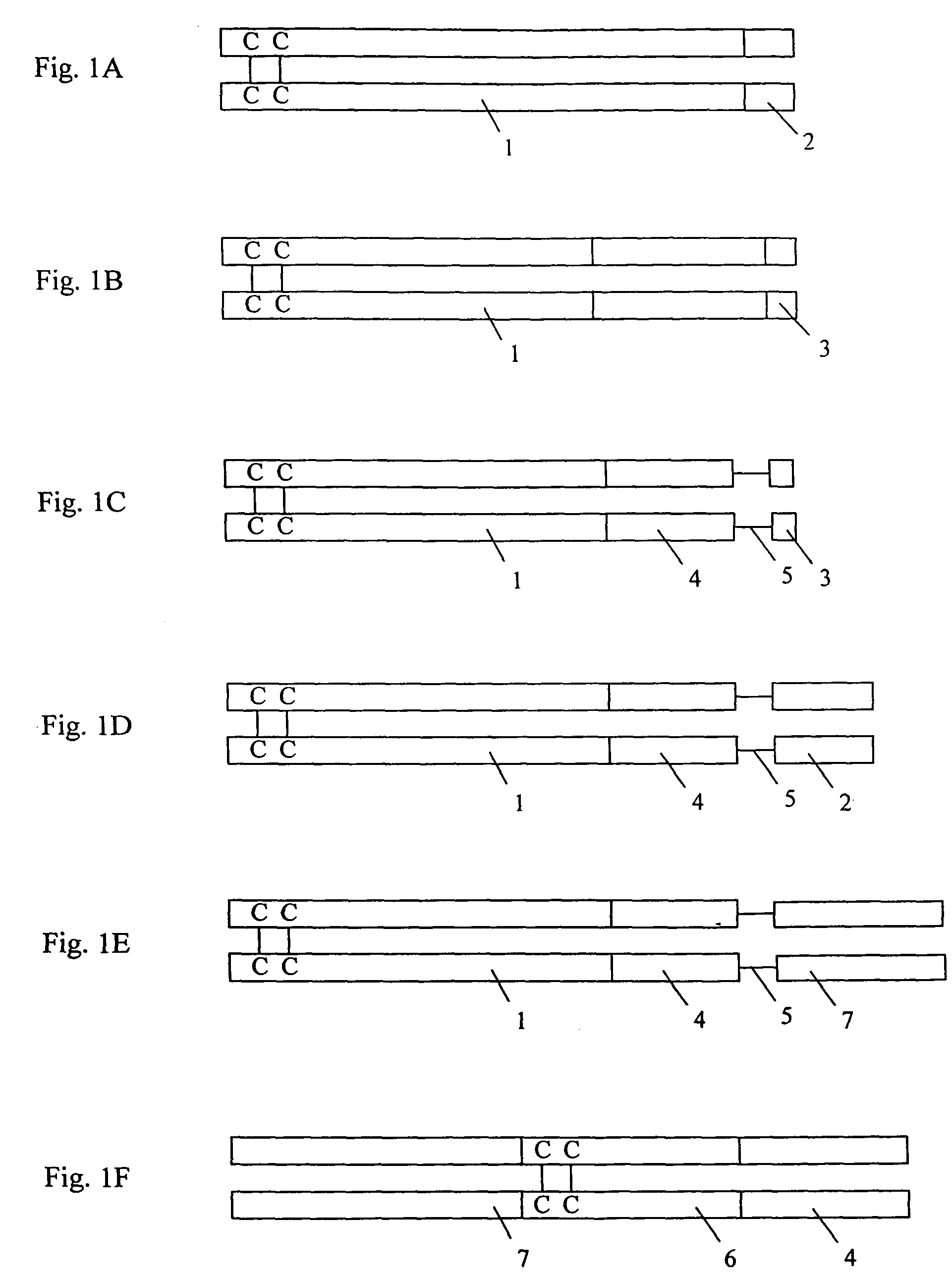Expression and export of angiogenesis inhibitors as immunofusins
an angiogenesis inhibitor and immunofusin technology, applied in the direction of fusion polypeptides, peptide/protein ingredients, dna/rna fragmentation, etc., can solve the problems of inability to produce clinical grade soluble active angiostatin and endostatin, inability to provide the optimal environment for the expression of angiostatin by itself, and large amount of proteins, etc., to achieve the effect of facilitating a high level expression of biologically active angiosta
- Summary
- Abstract
- Description
- Claims
- Application Information
AI Technical Summary
Benefits of technology
Problems solved by technology
Method used
Image
Examples
example 1
Expression of huFc-huEndostatin
[0066]Human endostatin was expressed as a human Fc-human endostatin (huFc-huEndo) fusion protein according to the teachings of Lo et al. (1998) Protein Engineering 11:495. Fc refers to the Fc fragment of the human immunoglobulin gamma (DNA sequence set forth in SEQ ID NO:1; amino acid sequence set forth in SEQ ID NO:2). (Polymerase chain reactions PCR) was used to adapt the endostatin cDNA (SEQ ID NO:3; whose amino acid sequence is disclosed in SEQ ID NO:4), for expression in an Fc-Endo fusion protein. The forward primer was either 5′-CC CCG GGT AAA CAC AGC CAC CGC GAC TTC C (SEQ ID NO:5; encoded amino acids disclosed in SEQ ID NO:6) or 5′-C AAG CTT CAC AGC CAC CGC GAC TTC C (SEQ ID NO:7; encoded amino acids disclosed in SEQ ID NO:8), where the XmaI site or the HindIII site was followed by sequence encoding the N-terminus of endostatin. The primer with the XmaI site adapted the endostatin cDNA for ligation to the XmaI site at the end of the CH3 domain ...
example 2
Cell Culture and Transfection
[0067]For transient transfection, the plasmid was introduced into human kidney 293 cells by co-precipitation of plasmid DNA with calcium phosphate (Sambrook et al. (1989) Molecular Cloning—A Laboratory Manual, Cold Spring Harbor, N.Y.) or by lipofection using LipofectAMINE Plus (Life Technologies, Gaithersburg, Md.) according to supplier's protocol.
[0068]In order to obtain stably transfected clones, plasmid DNA was introduced into the mouse myeloma NS / 0 cells by electroporation. NS / 0 cells were grown in Dulbecco's modified Eagle's medium supplemented with 10% fetal bovine serum. About 5×106 cells were washed once with PBS and resuspended in 0.5 ml PBS. Ten μg of linearized plasmid DNA then was incubated with the cells in a Gene Pulser Cuvette (0.4 cm electrode gap, BioRad, Hercules, Calif.) on ice for 10 min. Electroporation was performed using a Gene Pulser (BioRad, Hercules, Calif.) with settings at 0.25 V and 500 μF. Cells were allowed to recover for ...
example 3
ELISA Procedures
[0069]Three different ELISAs were used to determine the concentrations of protein products in the supernatants of MTX-resistant clones and other test samples. The anti-human Fc (huFc) ELISA was used to measure the amount of human Fc-containing proteins. The anti-murine Fc (muFc) and anti-canine Fc (caFc) antibodies were used in ELISAs to measure the amount of murine Fc- and canineFc-containing proteins, respectively. The procedure for the anti-huFc ELISA is described in detail herein below.
A. Coating Plates
[0070]ELISA plates were coated with AffiniPure Goat anti-Human IgG (H+L) (Jackson ImmunoResearch Laboratories, West Grove, Pa.) at 5 μg / ml in PBS, and 100 μl / well in 96-well plates (Nunc-Immuno plate MaxiSorp™, Nalge Nunc International, Rochester, N.Y.). Coated plates were covered and incubated at 4° C. overnight. Plates then were washed 4 times with 0.05% Tween 20 in PBS, and blocked with 1% BSA / 1% Goat Serum in PBS, 200 μl / well. After incubation with the blocking...
PUM
| Property | Measurement | Unit |
|---|---|---|
| concentrations | aaaaa | aaaaa |
| pH | aaaaa | aaaaa |
| drug resistance | aaaaa | aaaaa |
Abstract
Description
Claims
Application Information
 Login to View More
Login to View More - R&D
- Intellectual Property
- Life Sciences
- Materials
- Tech Scout
- Unparalleled Data Quality
- Higher Quality Content
- 60% Fewer Hallucinations
Browse by: Latest US Patents, China's latest patents, Technical Efficacy Thesaurus, Application Domain, Technology Topic, Popular Technical Reports.
© 2025 PatSnap. All rights reserved.Legal|Privacy policy|Modern Slavery Act Transparency Statement|Sitemap|About US| Contact US: help@patsnap.com

